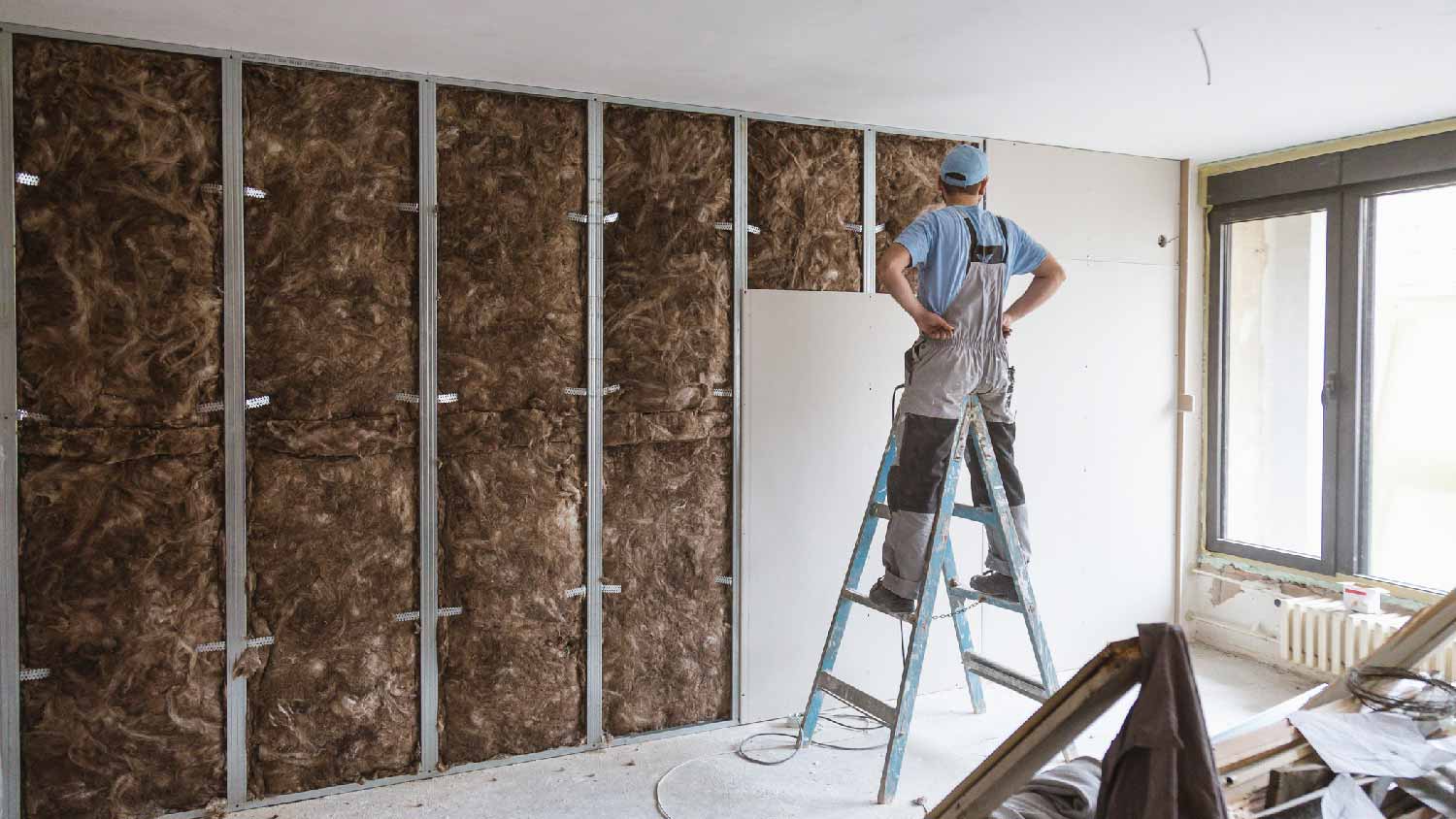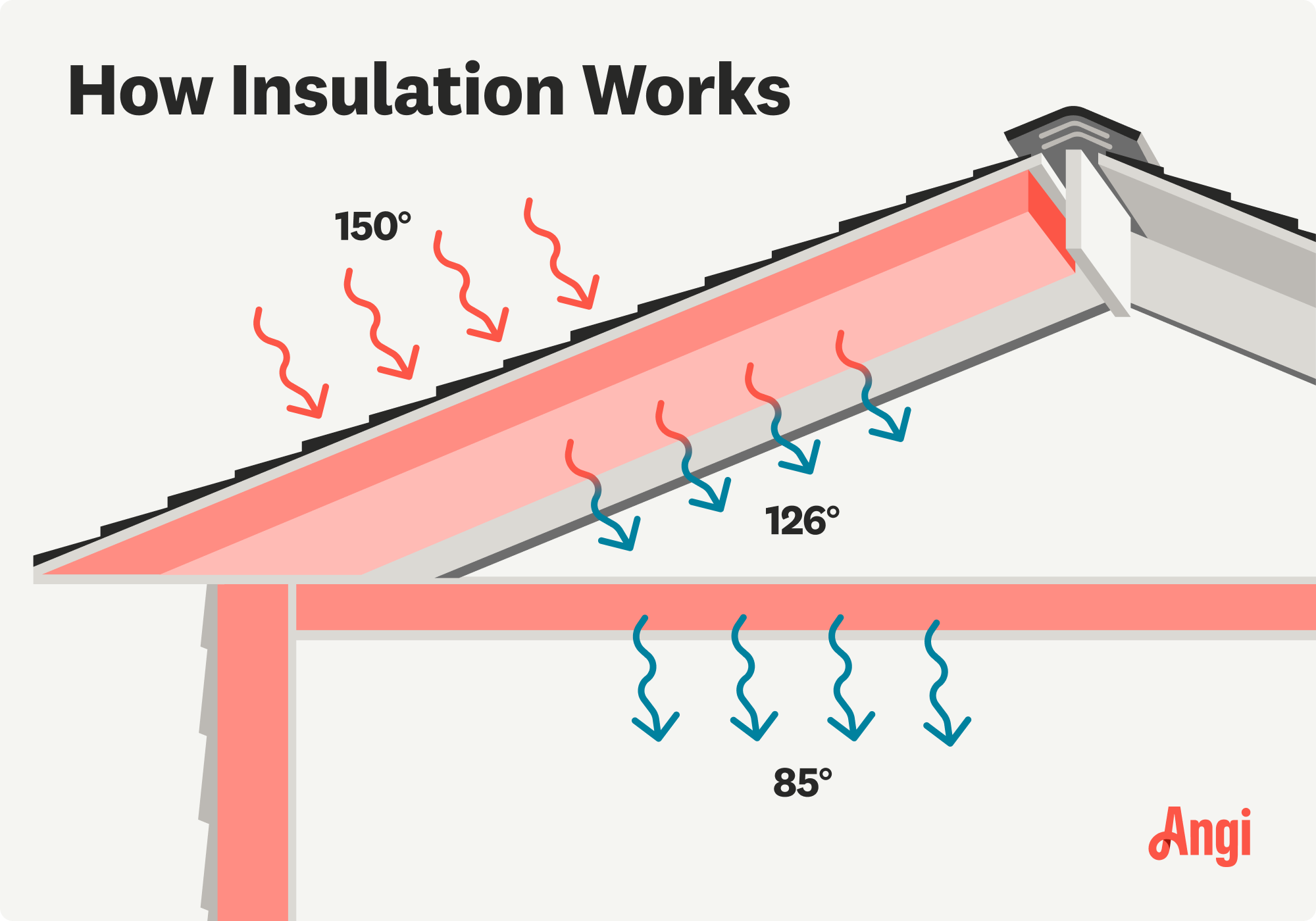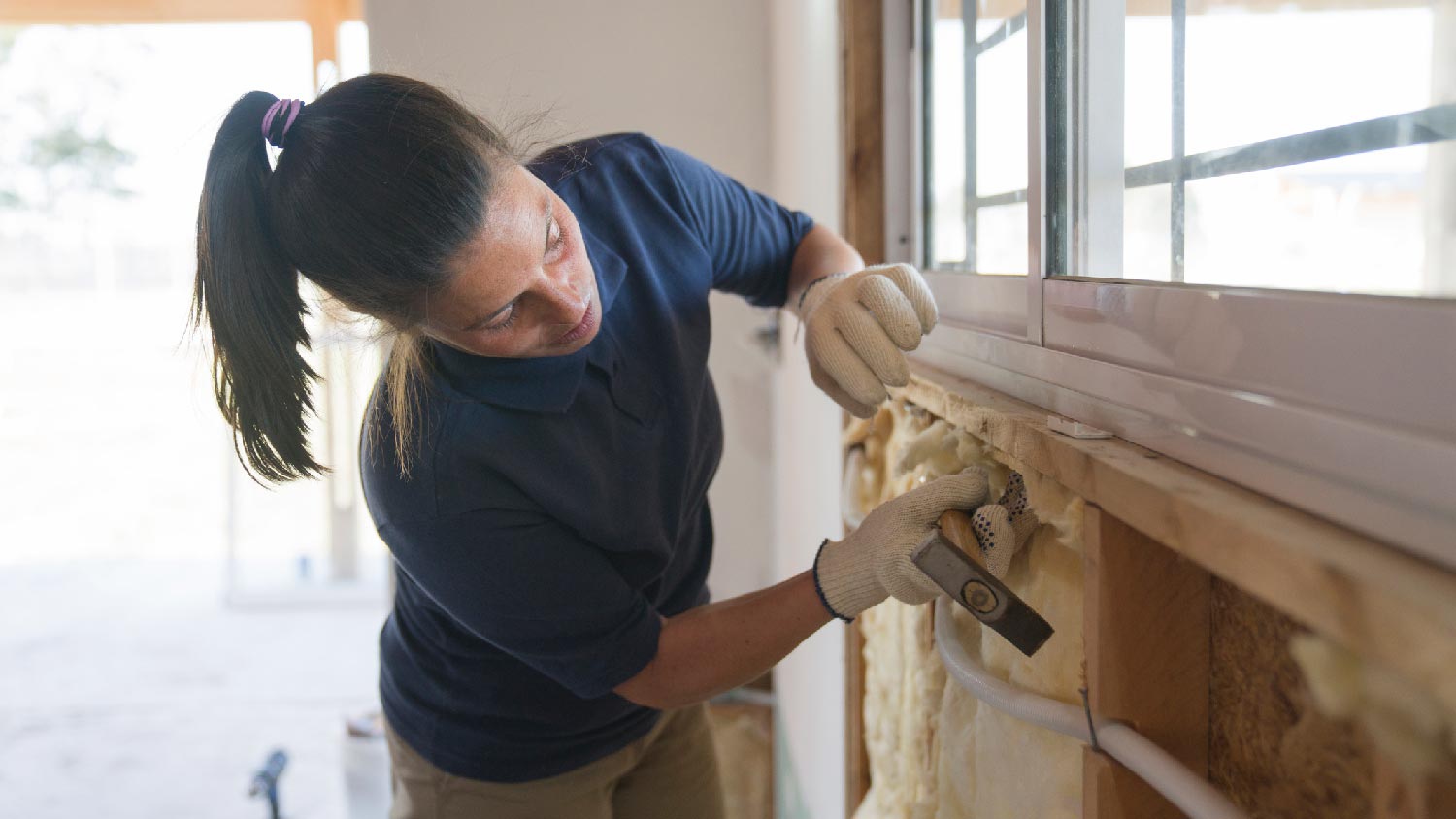
The cost of blown-in insulation costs varies depending on the type of insulation, labor, prep work, and more. Learn more about the cost factors in this guide.
Keep the cold out and the heat in


You should hire a pro to install wall insulation since this project exposes you to irritants, moisture-trapping errors, and the risk of cutting into wiring or pipes.
A pro costs around $1,850, but they keep you safe and prevent mistakes that can cost far more than the cost of installing insulation.
An insulation pro knows which insulation type fits your home’s climate, wall structure, and obstructions.
DIYers might not have access to blow-in machines, safety gear, and specialty tools for consistent coverage and proper R-value installation.
Inexperienced installers can compress batts, miss air-leak points, block ventilation paths, or leave gaps, all of which can cause long-term moisture problems.
Want to make your home more comfortable, lower your energy bills, and keep noise from traveling from one room to the next? Adding insulation is the way to go. Learn more about how to install wall insulation to keep your home cozy in the winter and chill in the summer.
Adding insulation to your home's walls offers many benefits. Let's start with the big one: Insulation helps you regulate the temperature inside your home. In the winter, it keeps cold air outside, and in the summer, it keeps hot air from getting in.
At the same time, insulation also helps to seal up your home, preventing air leaks that can impact moisture levels. With better humidity control, you'll feel more comfortable.
Then there are the sound benefits. If you feel like you can hear everything that goes on in your home or that noise from the outside world is constantly seeping in, insulation will help to block it, providing better sound protection.
On the cost-savings side, a properly insulated home means you can set your thermostat to a cooler temperature in the winter or a higher one in the summer, lowering your utility bills and helping you use less energy.
The cost of insulation depends on the type, your home's size, and whether you DIY or work with a professional. Where you install the insulation also affects the final price tag, with the average project cost coming in at $1,850.
In terms of insulation types, fiberglass tends to be the most budget-friendly, costing between $0.30 and $1.50 per square foot, while rockwool and wood fiber insulation are at the upper end of the price range.

Before you start your insulation project, take some time to determine what you need and to detect any issues in your home.
Choose the right insulation: Insulation's R-value determines how well it prevents heat transfer. The R-value you need depends on the climate in your area.
Inspect your home: If you see signs of moisture problems, you'll most likely need to install vapor barriers. If there are air leaks, they should be filled and blocked before proceeding.
Add a cushion: Measure your walls and calculate how much insulation you'll need, then add a little extra to account for waste or mistakes.
Play it safe: Before you start, make sure you have the right safety gear, including gloves, goggles, and a mask. Long-sleeved shirts and pants are also a must, as the insulation material can be very irritating.
How you install wall insulation depends on the type of walls in your home and whether you're starting with finished or unfinished walls. If you're redoing a room or building your home from scratch, the walls will most likely still be open, meaning you can easily install batt or roll insulation. If you're adding insulation to pre-existing drywall or plaster walls, spray foam or loose-fill insulation is the way to go.
If you're starting with open walls, roll or batt insulation is the best choice. Insulation batts are sold in lengths that are the same as the height of an average room, meaning less work for you in the end.
Before you begin, put on your protective gear, including your mask, goggles, and gloves.
To install roll or batt insulation, position it between two studs on the wall, with the brown paper side facing into the room. Oftentimes, roll or batt insulation perfectly matches the width between studs, so you don't have to cut it down. If you're using roll insulation, you'll need to cut it to a length that matches the height of your walls.
The insulation should fit snugly between the two studs. If you'd like, you can staple the brown paper facing the studs for extra security.
Do you live in an older home with plaster walls or existing drywall? You can still add insulation, and you don't even have to take down the current walls.
You can insulate existing walls with loose-fill or spray foam insulation. To do so, you'll need to drill holes in the wall at several points, slide a tube into the hole, and blow the insulation in using a blowing machine.
As with roll or batt insulation, it's important to wear safety equipment, including eye protection, a mask, and gloves, when working with blown-in insulation. Also, note that certain types of spray foam insulation can only be installed by an insulation professional.

According to Angi data, over 70% of homeowners looking to install batt and roll insulation are installing it in exposed or unfinished walls. Because this type of insulation comes in large sheets, the walls must be exposed. Otherwise, you’ll need to factor in the cost of opening up the wall and closing it back up.

Insulation is definitely not one-size-fits-all. The type you choose will depend on your home's location and condition, and your budget will also influence your final decision.
Don't ignore the R-value: The R-value may be the most important number to know when choosing insulation. The EnergyStar program has a handy chart to help you choose the right R-value based on your local climate and your home's existing insulation.
Be aware of what's lurking behind your walls: Pipes and other obstructions can help you choose the right type of insulation. For example, pipes can get in the way if you're adding spray foam or loose-fill insulation and can make it impossible to install rigid foam insulation.
Depending on the size and scope of your project, not to mention the type of insulation you want to install, hiring a professional insulation company near you to do the job is often the way to go. In fact, for certain types of insulation, such as open-cell spray foam, you need to hire a pro rather than try and DIY.
From average costs to expert advice, get all the answers you need to get your job done.

The cost of blown-in insulation costs varies depending on the type of insulation, labor, prep work, and more. Learn more about the cost factors in this guide.

Learn the key factors that influence the cost of renting a blown-in insulation machine.

Crawl space insulation costs vary by size, insulation type, and material. Read this guide to learn how much your crawl space insulation could cost.

Read our step-by-step guide and learn how to remove fiberglass insulation. Our instructions will help you remove this tricky material quickly and safely.

Wondering how to install cellulose insulation on your own? Our DIY cellulose insulation guide breaks it down into five easy steps.

Learning how to install insulation requires technique, patience, and safety training. Read our guide to see if it’s a DIY project you should take on yourself.